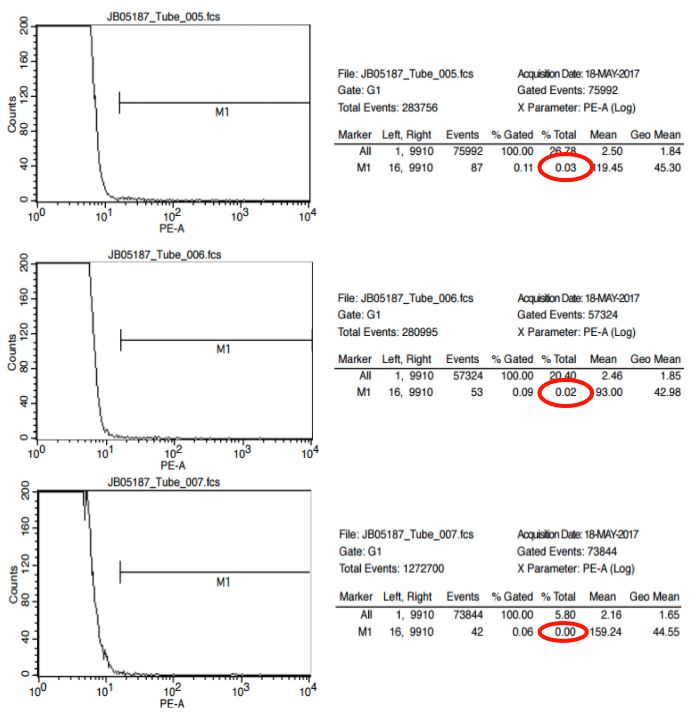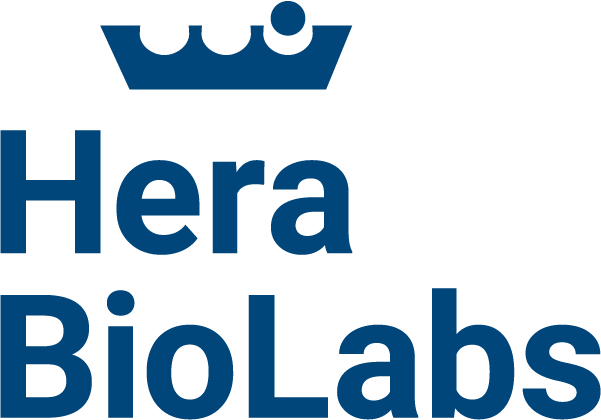Leukemia xenograft efficacy studies in NSG mice
shRNA-Mediated Killing of acute T cell leukemia in NSG Mice from Jurkat cells – A 56-day leukemia tumor implantation and efficacy study.
The objective of this study is to determine the effect of shRNA-mediated knockdown of a target gene on human Jurkat T-cell leukemia engraftment in the NSG (NOD-SCID IL2Rgamma null) mouse. Jurkat T-cell leukemia cells were treated, either with target-specific shRNA (Sponsor shRNA) or with a scrambled shRNA, and then implanted into NSG mice. Efficacy of the Sponsor shRNA was determined based on the difference in the amount of circulating human Jurkat leukemic cells (hCD45+) in blood, between the control and the test group.
Study Outline
| Group Number | Cell Line | Cell Number | Dosage Volume (mL) |
|---|---|---|---|
| 1 | Scrambled shRNA treated Jurkat T-cell leukemia (control group) | 1e6 | 100 µl |
| 2 | Sponsor shRNA treated Jurkat T-cell leukemia (treatment group) | 1e6 | 100 µl |
Blood was collected from NSG mice at weeks 1, 2, 4, 6, and 8 following Jurkat T-cell leukemia cell line injection. A minimum of 100µl of blood was collected in eppendorf tubes by submandibular vein and stained with hCD45 antibody for FACS analysis to determine the percentage of positive human CD45 cells.
Criteria: If the circulating hCD45 > 1%, then it is considered as a positive engraftment.
NSG mice-Scrambled shRNA

Scrambled shRNA control group mice engrafted up to 30% with human Jurkat T-cell leukemia as demonstrated in Flow cytometry data
NSG mice- Sponsor target shRNA

Sponsor target shRNA treatment group mice showed no engraftment of human Jurkat T-cell leukemia as demonstrated in Flow cytometry data
Mean tumor progression from week 6 to week 8: hCD45 circulating cells in the blood
Week 6
| Control % | shRNA % |
|---|---|
| 1.203333333 | 0.006666667 |
Week 8
| Control % | shRNA % |
|---|---|
| 14.04666667 | 0.016666667 |
Necropsy summary
Scrambled shRNA treated Jurkat T-cell leukemia in NSG mice (control group):
NSG mouse 1: Enlarged spleen. Tumors presence on the thoracic spinal-column.
NSG mouse 2: Mildly pale and enlarged spleen. Large tumor on liver lobe (4.88 x 4.32mm). Tumor presence on thoracic spinal-column.
NSG mouse 3: Mildly pale and enlarged spleen. Small white nodule on heart. Tumor presence on thoracic spinal-column.
Sponsor shRNA treated Jurkat T-cell leukemia in NSG mice (treatment group):
NSG mouse 1: All collected organs looked normal. Small nodule on stomach harvested.
NSG mouse 2: All collected organs looked normal. Lungs were dark and blue-ish, harvested and fixed.
NSG mouse 3: All collected organs looked normal. Lungs were dark and blue-ish, harvested and fixed.
Study Summary
Up to 4 weeks post injection, no hCD45+ cells were observed in the blood of either group (<0.2%).
At 6 weeks post injection, 1.2% of circulating cells were hCD45+ in the control NSG mice (injected with scrambled shRNA treated Jurkat T-cell leukemia). No hCD45+ cells were detectable in the blood of NSG mice injected with the Sponsor shRNA treated Jurkat cells (<0.2%).
At 8 weeks post injection,14% of circulating cells were hCD45+ in the blood of the control NSG mice (injected with scrambled shRNA treated Jurkat T-cell leukemia). No hCD45+ cells were detectable in the blood of NSG mice injected with Sponsor shRNA treated Jurkat T-cell leukemia (<0.2%).
